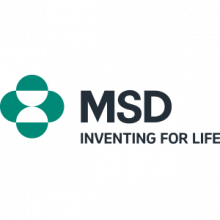DIAGNOSTIC PROCEDURES
How can a doctor determine if a patient has chronic inflammatory bowel disease, how severe it is, and what part of the bowel is affected? Your doctor will explain to you more precisely which diagnostic tests are needed in your case. In the first place, it will be a physical examination of the whole body, of course, especially the abdomen and anal area. Palpation, auscultation (listening to sounds of the abdomen) and percussion (tapping over dense organ tissue) will help the doctor assess the condition of the intestines and liver, and even estimate where the pain comes from. Doctors can also notice some typical changes that affect the skin, mucosa, eyes or joints. In the rectal area, inflammatory changes may be noticed at first glance, and palpation may reveal traces of blood.
Blood and urine samples are needed for laboratory tests: erythrocyte sedimentation rate (ESR), white blood cell count (WBC), red blood cell count (RBC), platelet count (collectively known as blood counts), blood protein composition, iron levels, blood electrolyte levels and more. These tests tell the doctor if there is a general inflammatory reaction in the body, if the absorption of nutrients from the gut is impaired, or if bleeding has occurred. Urine analysis allows to evaluate kidney function. If the results of these tests indicate the presence of inflammatory bowel disease, further tests are needed to determine the form and extent of bowel damage.
Sonographic examination of the abdomen is one of the less demanding examinations. This method usually captures distension of the intestine, thickening of the intestinal wall, changes in the appearance of the liver, gallstones or kidney stones, abscesses, impaired urinary outflow from the kidneys, etc. The examination is non-invasive and may be repeated if needed.
To determine the type and extent of chronic inflammatory bowel disease, it is necessary to determine exactly which parts of the bowel are affected. This means that the small and large intestine, esophagus and stomach must be examined visually. Two types of examinations are used for this purpose.
The first is endoscopy of the digestive tract, during which it is possible to examine the said digestive organs from the inside. The second is an X-ray examination using a contrast agent. In the X-ray image, the administered contrast agent is displayed inside the digestive organs. This can be used to show their structure as well as assess their condition. In special cases, a scintigraphic examination is performed.
Endoscopy can be performed from both the "upper" end of the digestive tract - to examine the esophagus, stomach and duodenum, as well as from the "lower" end - to examine the entire colon, or even the end of the small intestine (terminal ileum). Endoscopy is performed with a long flexible tubular endoscope. Its cross section is 9 - 12 mm. These high-precision instruments are equipped at both ends with optical systems which are interconnected by a bundle of long glass fibers. This flexible optical system directs light into the body and transmits the image back, making it accessible to direct observation. Modern devices also allow the transfer of images to the monitor (screen). This means that a larger group of people - including the patient - can monitor the ongoing examination at the same time. The end of the endoscope can rotate in all directions inside the intestine. Air or water is pumped into the digestive tract to improve visibility. Another endoscope channel is used to insert biopsy forceps to take tissue samples. Endoscopy allows direct visual evaluation of the digestive tract. Normal findings and inflammatory changes can be well distinguished from each other in this examination. Additionally, and this is one of the main advantages of this method, tissue samples can be taken from the affected areas, which are further examined under a microscope. Microscopic examination of the tissue makes it possible to determine the presence of the inflammatory process, its nature and severity.
It confirms the presence of chronic inflammatory bowel disease and usually allows a distinction to be made between Ulcerative Colitis and Crohn's Disease.
In gastroscopy, the endoscope is inserted through the mouth, esophagus and stomach into the duodenum. This examination must be carried out when the stomach is empty, otherwise food particles would prevent the examiner from seeing the inner surface of the organ, preventing perfect observation. The examination is not painful, except for an unpleasant endoscope in the throat and a feeling of pressure in the stomach.
In colonoscopy, the endoscope is inserted into the anal opening (anus) and is passed further through the entire colon until the exit of the small intestine. The examiner can cross the ileocaecal valve at the end of the device, which connects the small and large intestines, so that he can also examine the end section of the small intestine. This examination requires more intensive preparation. 24 hours before it, the patient cannot eat solid food. He must use a laxative together with a sufficient amount of fluid (a special aqueous solution) to completely clean the bowel. Another way is to administer the enema, thus shortening the preparation. However, some patients find this procedure more unpleasant. Colonoscopy is not always painless, especially if inflammatory adhesions of the internal organs are present. Medications and injections for sedation and painkillers, which are given before the examination, will reduce the discomfort to a tolerable extent.
Through rectoscopy, the rectum (the 15 - 20 cm long segment at the end of the intestine) is examined. Rectoscopy is the simplest and least unpleasant examination. The rectum is rinsed out with a small amount of fluid (enema) and a short fixed endoscope is inserted into the anal opening. Tissue samples may be taken if needed. If the inflammation of the intestine is limited to the rectum only, this examination is quite sufficient for ongoing inspections. It can be repeated as needed as it does not require time consuming preparation.vu.
X-rays are used to obtain images of the digestive tract from the esophagus to the rectum. During the examination, the X-ray contrast agent (gastroenteral suspension – barium sulphate) gradually enters the esophagus, stomach and small intestine after ingestion. By monitoring its progress, various obstacles and deformations can be detected. Various special techniques are used to examine individual sections of the intestine. Special attention is always paid to contractions of the intestinal wall (perilstatics), pathological changes on the surface of the mucosa, and especially the symptoms of dilatation of the intestine or the presence of "short circuits" (intestinal fistulas).
Upon examination of the segment in the upper gastrointestinal tract, the patient drinks an X-ray contrast agent (barium sulphate) and its progress through the esophagus, stomach and small intestine is monitored by repeated X-rays. It is often necessary to wait a relatively long time for the contrast medium to pass through the entire small intestine. To obtain a more accurate picture of the condition of the small intestine, an examination technique has been developed, which is named after its discoverer – Sellink. During the examination, a thin tube (probe) is gradually inserted into the duodenum through the esophagus and stomach. The contrast medium then enters the small intestine via a probe. This method makes it possible to better evaluate the section of the small intestine from the duodenum to the terminal ileum. This part of the small intestine is currently not possible to achieve with an endoscope, even with the use of the most modern technology.
Colon examination is performed using a barium enema. As with colonoscopy, the intestine must be completely cleaned beforehand. Even in this case, it is necessary not to eat solid food 24 hours before the examination. The contrast medium enters the colon through a probe inserted into the anal opening. To improve the display of the contours of the mucosal surface, some air is pumped into the intestine during the examination, which causes discomfort in some patients. The contrast agent usually progresses to the end of the small intestine (terminal ileum), so that any disease findings in this area can also be captured. At present, an X-ray examination of the terminal ileum can also be performed during a colonoscopy, which simplifies the examination.
Leucocyte scintigraphy is a new, only recently introduced method for determining the extent of the inflammatory disease process. The patient's white blood cells (leucocytes) are separated from the blood sample and labelled with a radioactive substance. The labelled leukocytes are injected back into the bloodstream and gradually accumulate in those areas of the intestine or organism where inflammation is present. For these months, they can be located using a radioactivity detector (gamma camera). This examination does not require special preparation and is not unpleasant. However, due to the patient's radiation exposure and as it is only suitable for determining the extent and not the type of disease, it is only used in special cases (for example, when a narrowing of the bowel cross-section is suspected).
There is no need to worry that all these examinations will have to be repeated on an ongoing basis. A detailed diagnostic program is usually only needed for the first confirmation of the diagnosis.
Which examination will be most appropriate in a particular case depends on the individual situation of the patient and on the current characteristics of the disease.
X-rays and endoscopic examinations complement each other. In general, endoscopy is used to examine more easily accessible parts of the digestive tract, as it does not impose a radiation burden on the patient and, if necessary, allows tissue samples to be taken for microscopic examination. X-ray examination is usually required to examine the small intestine, especially if it is suspected that fistulas or stenoses (lumen narrowing) are present in the large intestine.
Nuclear magnetic resonance imaging (NMR) is the most appropriate method for accurate imaging of fistulas and abscesses in the anal area. In this examination, the image is created using a special magnetic field without radiation exposure of the patient.
Authors: Prof.Dr.J. Scholmerich, Dr. P. Hoppe-Seyler, Prof. Dr. Martin Lausen

















